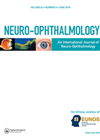
Journal Reviews
Using OCT to screen and monitor Alzheimer’s disease
Alzheimer’s disease (AD) is a neurodegenerative illness characterised by progressive decline in cognitive function. AD is the main cause of dementia worldwide. Over recent years researchers have strived to find biomarkers to diagnose AD, particularly in the early stages of...
Visual outcomes, visual fields and optical coherence tomography in paediatric craniopharyngioma
This study reviews the visual outcomes of ten patients under the age of 18 years with craniopharyngioma. The paper also reviews the correlation between visual field (VF) testing and optical coherence tomography (OCT) examination and evaluates the role of OCT...
Structural effects of migraine on the retina
Migraine is a common, chronic, multifactorial neuro-vascular disorder typically characterised by recurrent attacks of disabling headache and autonomic nervous system dysfunction (migraine without aura). Up to one third of patients also have neurological aura symptoms (migraine with aura). The objective...
Long-term retinal changes following unilateral retrobulbar optic neuritis
The aim of this study was to assess the longitudinal changes in retinal nerve fibre layer (RNFL) thickness after a first attack of optic neuritis and to investigate the impact of treatment on RNFL thinning at one year after the...






